Cucurbitacin D induces cell cycle arrest and apoptosis by inhibiting STAT3 and NF-κB signaling in doxorubicin-resistant human breast carcinoma (MCF7/ADR) cells
- PMID: 26169986
- PMCID: PMC4589559
- DOI: 10.1007/s11010-015-2509-9
Cucurbitacin D induces cell cycle arrest and apoptosis by inhibiting STAT3 and NF-κB signaling in doxorubicin-resistant human breast carcinoma (MCF7/ADR) cells
Abstract
Breast cancer is the most common cancer for women and is a major cause of mortality in women. Doxorubicin is a generally used chemotherapy drug for breast cancer. However, multidrug resistance of breast cancer interferes with the chemotherapy. We examined whether cucurbitacin D affects doxorubicin resistance of MCF7/ADR breast cancer cells. Cell viability was measured by MTT assay. Levels of p-STAT3, p-NF-κB, IκB, and caspases were measured by Western blot analysis. Nuclear staining of Stat3 and NF-κB was measured by immunocytochemistry. STAT3 and NF-κB transcriptional activity was detected by STAT3 and NF-κB luciferase reporter gene assays. Analysis of cell cycle arrest was performed by flow cytometry. Induction of apoptosis by cucurbitacin D was measured by Annexin V-FITC/propidium iodide assay. More than 90% of MCF7/ADR cells lived upon treatment with doxorubicin for 24 h. However, upon treatment with cucurbitacin D, cell death was more than 60%. Co-administration of cucurbitacin D and doxorubicin induced apoptosis, and G2/M cell cycle arrest, and inhibited upregulated Stat3 by doxorubicin on MCF7/ADR cells. Additionally, cucurbitacin D led to an increase in the IκBα level in the cytosol and a decrease in the p-NF-κB level in the nucleus. Finally, cucurbitacin D inhibited translocation of Stat3 and NF-κB and decreased transcriptional activity in the nucleus. Cucurbitacin D decreases cell proliferation and induces apoptosis by inhibiting Stat3 and NF-κB signaling in doxorubicin-resistant breast cancer cells. Cucurbitacin D could be used as a useful compound to treat adriamycin-resistant patients.
Keywords: Breast cancer; Cucurbitacin D; Doxorubicin; MCF7 cell; MCF7/ADR cell; Multidrug resistance.
Figures
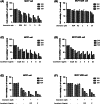
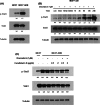

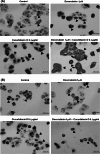
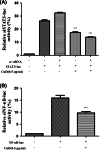
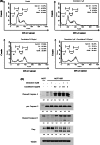

Similar articles
-
Synergistic anticancer effect of combined use of Trichosanthes kirilowii with cisplatin and pemetrexed enhances apoptosis of H1299 non-small-cell lung cancer cells via modulation of ErbB3.Phytomedicine. 2020 Jan;66:153109. doi: 10.1016/j.phymed.2019.153109. Epub 2019 Oct 23. Phytomedicine. 2020. PMID: 31790894
-
Schisandrin A reverses doxorubicin-resistant human breast cancer cell line by the inhibition of P65 and Stat3 phosphorylation.Breast Cancer. 2018 Mar;25(2):233-242. doi: 10.1007/s12282-017-0821-9. Epub 2017 Nov 27. Breast Cancer. 2018. PMID: 29181822
-
Combination treatment of ligustrazine piperazine derivate DLJ14 and adriamycin inhibits progression of resistant breast cancer through inhibition of the EGFR/PI3K/Akt survival pathway and induction of apoptosis.Drug Discov Ther. 2014 Feb;8(1):33-41. doi: 10.5582/ddt.8.33. Drug Discov Ther. 2014. PMID: 24647156
-
Exploiting our knowledge of NF-kappaB signaling for the treatment of mammary cancer.J Mammary Gland Biol Neoplasia. 2006 Jan;11(1):63-73. doi: 10.1007/s10911-006-9013-5. J Mammary Gland Biol Neoplasia. 2006. PMID: 16900390 Review.
-
NF-κB signaling in therapy resistance of breast cancer: Mechanisms, approaches, and challenges.Life Sci. 2024 Jul 1;348:122684. doi: 10.1016/j.lfs.2024.122684. Epub 2024 May 4. Life Sci. 2024. PMID: 38710275 Review.
Cited by
-
Hydroxyl safflower yellow B combined with doxorubicin inhibits the proliferation of human breast cancer MCF-7 cells.Oncol Lett. 2021 May;21(5):426. doi: 10.3892/ol.2021.12687. Epub 2021 Mar 29. Oncol Lett. 2021. PMID: 33850567 Free PMC article.
-
Novel proteasome inhibitor ixazomib sensitizes neuroblastoma cells to doxorubicin treatment.Sci Rep. 2016 Sep 30;6:34397. doi: 10.1038/srep34397. Sci Rep. 2016. PMID: 27687684 Free PMC article.
-
Use of a Combined Gene Expression Profile in Implementing a Drug Sensitivity Predictive Model for Breast Cancer.Cancer Res Treat. 2017 Jan;49(1):116-128. doi: 10.4143/crt.2016.085. Epub 2016 May 18. Cancer Res Treat. 2017. PMID: 27188202 Free PMC article.
-
Uncovering the anti-cancer mechanism of cucurbitacin D against colorectal cancer through network pharmacology and molecular docking.Discov Oncol. 2025 Apr 17;16(1):551. doi: 10.1007/s12672-025-02056-7. Discov Oncol. 2025. PMID: 40244518 Free PMC article.
-
Antiinflammatory effects of cucurbitacins and sorafenib in Hepg2 cells by modulating the IκB/NF-κB/COX-2 pathway through Akt signaling.Turk J Biol. 2025 Jan 15;49(3):309-323. doi: 10.55730/1300-0152.2747. eCollection 2025. Turk J Biol. 2025. PMID: 40678417 Free PMC article.
References
-
- Sledge GW, Neuberg D, Bernardo P, Ingle JN, Martino S, Rowinsky EK, Wood WC. Phase III trial of doxorubicin, paclitaxel, and the combination of doxorubicin and paclitaxel as front-line chemotherapy for metastatic breast cancer: an intergroup trial (E1193) J Clin Oncol. 2003;21:588–592. doi: 10.1200/JCO.2003.08.013. - DOI - PubMed
Publication types
MeSH terms
Substances
LinkOut - more resources
Full Text Sources
Other Literature Sources
Medical
Research Materials
Miscellaneous

